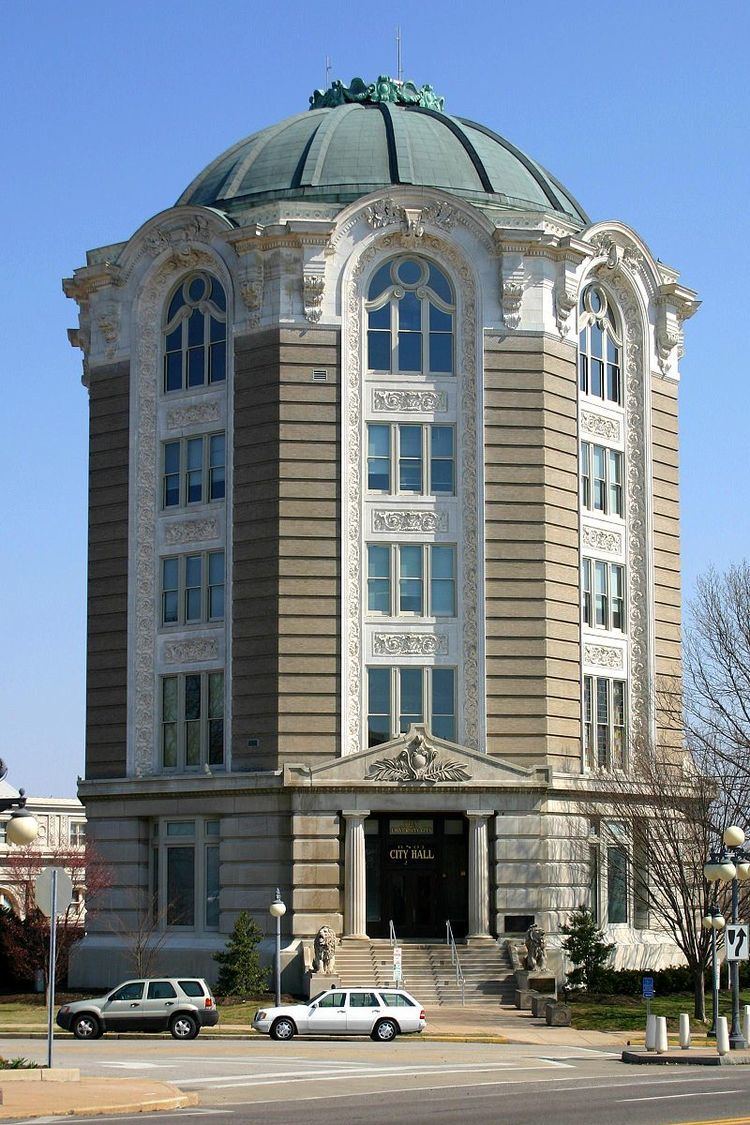Built 1902 Added to NRHP March 7, 1975 Area 4 ha | Architectural style Renaissance Opened 1902 Phone +1 314-862-6767 | |
 | ||
Location Roughly bounded by Delmar Blvd., Trinity, Harvard, and Kingsland Aves., University City, Missouri Part of University City Plaza (#75002092) Address 6801 Delmar Blvd, St. Louis, MO 63130, USA Hours Closed today SundayClosedMonday8AM–5PMTuesday8AM–5PMWednesday8AM–5PMThursday8AM–5PMFriday8AM–5PMSaturdayClosed Similar Heman Park, Forest Park–DeBaliviere station, Delmar Loop station, Missouri History Museum, Forest Park | ||
The City Hall of University City, Missouri, the seat of municipal government for University City, Missouri, was built in 1903 as the "Women's Magazine Building", the headquarters of a magazine publishing company, and became a city hall in 1930. The building is part of the University City Plaza, which was added to the National Register of Historic Places on March 7, 1975.
The octagonal, five-story brick-and-limestone building was built in a rococo style with a dome roof. It was designed by Herbert C. Chivers (1869–1946), a local architect who had helped draft plans for St. Louis' Union Station. Its landscaping was done in 1907 by landscape architect George E. Kessler.
For the 1904 St. Louis World's Fair, the world's largest carbon arc searchlight was installed atop the dome, 135 feet above street level. An eight-ton, 80-inch light built by General Electric in 1903, the searchlight developed at least 1 billion candlepower. It was first illuminated on April 30, 1904, opening night of the World's Fair.
Among the architectural details that have been removed from the building are terra cotta cherubs along its roof line and a tunnel connecting it to the much larger Egyptian Building, now destroyed.
It was built by magazine publisher and businessman Edward Gardner Lewis, a native of Connecticut who came to St. Louis, Missouri, in the late 1890s, selling insect extermination products and medicines that were said to be highly questionable. He bought a magazine called "Winner," based in downtown St. Louis, which he renamed "Woman's Magazine" and quickly built its circulation to the largest in the country, amassing a fortune in the process. In 1902, Lewis purchased 85 acres (344,000 m²) several miles west of downtown St. Louis. The tract, located near the construction site of the World's Fair, would become the nucleus for the streetcar suburb of University City.
In 1903, with his publishing operation outgrowing its downtown location, Lewis began the construction of a new Lewis Publishing Company headquarters and Press Annex at this site. After incorporating University City in 1906, he served three terms as mayor. During this time, he built the Woman's Magazine Building, an Egyptian temple and an Art Academy. But Lewis' financial empire in Missouri collapsed amid charges of mail fraud, bankruptcy, and litigation, and by 1915, he had moved his base of operations to Atascadero, California. Lewis declared bankruptcy a second time in 1924.
The Magazine Building was dedicated as the new city hall on November 1, 1930.
